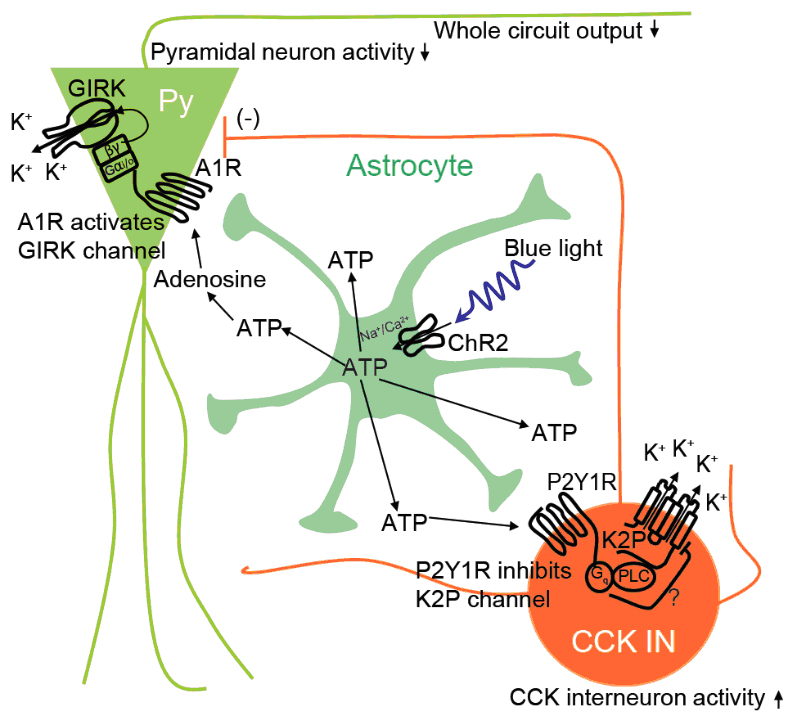Astrocytes, the most abundant cell type in the brain, have important roles in the central nervous system. In general, astrocyte responds to neuronal activity with calcium waves and modulates synaptic transmission through the release of gliotransmitters. However, little is known about the direct effect of gliotransmitters on the excitability of neuronal networks beyond synapses.
In a recent paper from Shumin Duan’s lab showed that selective stimulation of astrocytes expressing channelrhodopsin-2 in the CA1 area specifically increases the firing frequency of CCK-positive but not parvalbumin-positive interneurons and decreases the firing rate of pyramidal neurons, phenomena mimicked by exogenously applied ATP. They provided direct evidences to show that, after light stimulation, astrocyte intracellular calcium waves increased accompanied with elevated extracellular ATP concentration. Further evidences indicate that ATP-induced increase and decrease of excitability are caused, respectively, by P2Y1 receptor-mediated inhibition of a two-pore domain potassium channel and A1 receptor-mediated opening of a G-protein-coupled inwardly rectifying potassium channel. Moreover, the activation of ChR2-expressing astrocytes reduces the power of kainate-induced hippocampal ex vivo gamma oscillation. These findings provide detailed mechanisms of how astrocyte-derived ATP differentially modulates the excitability of different types of neurons and efficiently controls the activity of neuronal network. This study extends our understanding of neuron-glia interaction and implicates the potential neuronal protective effects of ATP.
This work was published in Nature Communications entitled “Glia-derived ATP Inversely Regulates Excitability of Pyramidal and CCK-positive Neurons” on January 27th, 2017. This study was supported by the Ministry of Science and Technology 973 Projects and the National Natural Science Foundation of China.
